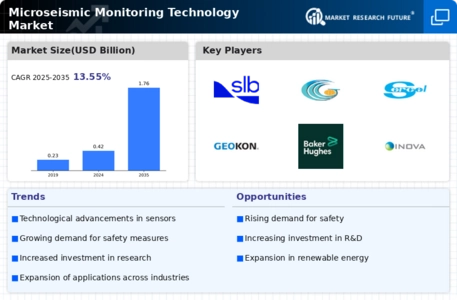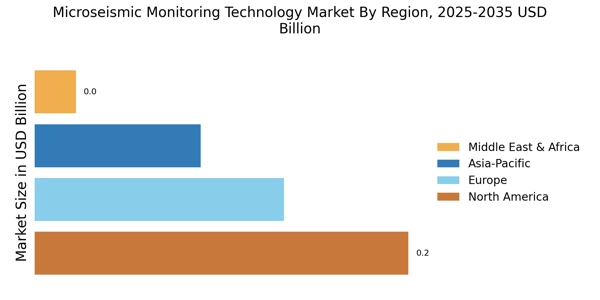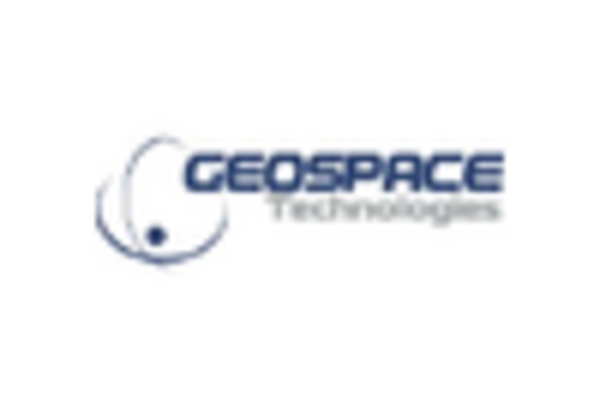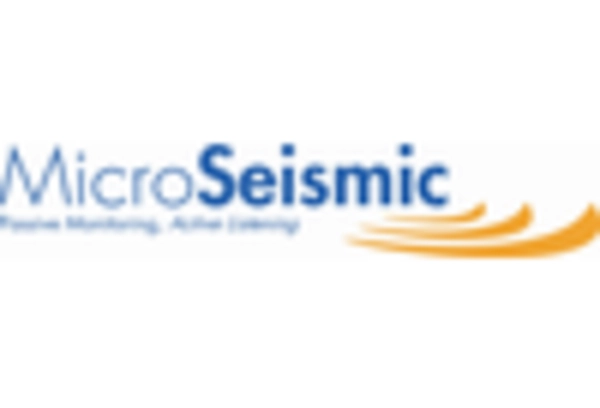Growing Need for Infrastructure Development
Infrastructure development is a critical driver for the Microseismic Monitoring Technology Market. As urbanization accelerates, the demand for robust infrastructure, including tunnels, bridges, and buildings, intensifies. Microseismic monitoring plays a vital role in assessing the stability and safety of these structures. In 2025, the construction industry is expected to witness investments exceeding 10 trillion USD, with a notable emphasis on integrating advanced monitoring solutions. This trend suggests that the need for microseismic monitoring will likely expand as stakeholders prioritize safety and risk management in construction projects.
Advancements in Data Processing Technologies
Advancements in data processing technologies are reshaping the Microseismic Monitoring Technology Market. The integration of artificial intelligence and machine learning into data analysis processes enhances the ability to interpret complex microseismic data. In 2025, the market for AI in seismic monitoring is projected to grow at a compound annual growth rate of 15%, reflecting the increasing reliance on sophisticated data analytics. This trend suggests that as data processing capabilities improve, the adoption of microseismic monitoring technologies will likely accelerate, providing more accurate and timely insights.
Rising Investment in Oil and Gas Exploration
The Microseismic Monitoring Technology Market is experiencing a surge in investment, particularly within the oil and gas sector. As companies seek to optimize extraction processes and enhance reservoir management, the demand for microseismic monitoring technologies is likely to increase. In 2025, the global oil and gas exploration budget is projected to reach approximately 500 billion USD, with a significant portion allocated to advanced monitoring technologies. This trend indicates a growing recognition of the value that microseismic data provides in understanding subsurface conditions, thereby driving market growth.
Increased Focus on Natural Disaster Mitigation
The Microseismic Monitoring Technology Market is significantly influenced by the growing emphasis on natural disaster mitigation. Governments and organizations are increasingly investing in technologies that can provide early warning systems for seismic events. In 2025, the global market for disaster management technologies is anticipated to surpass 100 billion USD, with microseismic monitoring being a crucial component. This focus on disaster preparedness indicates a potential increase in demand for microseismic solutions, as they offer valuable insights into seismic activity and help in developing effective response strategies.
Regulatory Pressures for Environmental Protection
Regulatory pressures for environmental protection are driving the Microseismic Monitoring Technology Market. Governments worldwide are implementing stricter regulations to monitor and mitigate the environmental impacts of industrial activities, particularly in mining and energy sectors. In 2025, the environmental monitoring market is expected to reach 50 billion USD, with microseismic monitoring being a key tool for compliance. This regulatory landscape indicates that companies will increasingly adopt microseismic technologies to ensure adherence to environmental standards, thereby fostering market growth.


















Leave a Comment